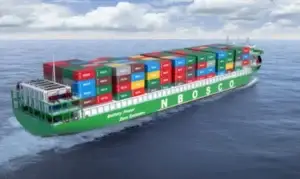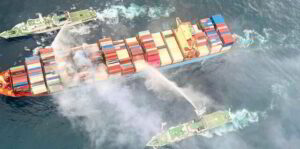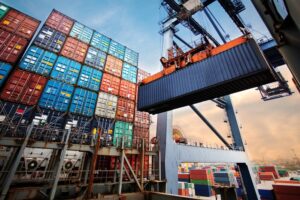In a globalized world, shipping routes serve as the critical veins and arteries of the international trade system. They ferry multitudes of container ships, brimming with goods, across the world. These bustling routes, when disrupted, can cause significant backlogs, highlighting their irreplaceable role in global commerce. But among all the routes, some shoulder the heaviest burden.
This discrepancy in traffic is largely due to the diverse demand for trade among various countries and ports. Particularly, developed economies in regions like North America and Europe often present high import and export levels compared to other areas.
Furthermore, geographical considerations such as location, distance, currents, tides, and coastal reefs often play an instrumental role in determining the route selection. A case in point is the Suez Canal, bridging the Atlantic and the Indian Ocean, consistently bustling due to the time it saves by bypassing a lengthy journey around Africa’s Cape of Good Hope.
Let’s embark on a journey of discovery along the five busiest shipping routes that truly encapsulate the pulse of global commerce.

- The English Channel
This vital aquatic lifeline nestled between France and the UK tops the list as the world’s busiest sea route. The Dover Strait, in particular, holds the title of the world’s busiest shipping lane. An impressive count of over 500 ships navigate through this channel daily. It stretches for 350 miles, with its width varying from 150 miles at its broadest to a mere 21 miles at the narrowest point.

- The Strait of Malacca
Wedged between the east coast of Indonesia and the Malay peninsula, the Strait of Malacca is a marine highway for global commerce. Acting as the shortest maritime link between the Pacific and the Indian Ocean, it stretches 550 miles, connecting to the Strait of Singapore. Despite its narrow width of just 3km at its smallest point, it facilitates the movement of over 70,000 vessels annually.

- The Panama Canal
The Panama Canal, a marvel of human engineering, was constructed between 1904 and 1914. With a length of 51 miles, it cuts through the continental divide between North and South America. It facilitates a crucial connection between the Atlantic and Pacific Oceans, eliminating the necessity for a lengthy journey that could take up to two months around South America’s tip. Each year, the Panama Canal witnesses the transit of approximately 14,000 ships.

- The Suez Canal
Located in Egypt, the Suez Canal provides the shortest sea link between the Atlantic and the Indian Ocean. Daily, it hosts between 50 to 100 vessels, showcasing its indispensability to global trade. Due to its narrow configuration allowing for only one-way traffic, any blockages can result in massive delays. This was glaringly exemplified by the Ever Given’s stranding incident, which caused a significant traffic snarl-up.

- The Danish Straits
The Danish Straits consist of a collection of minor straits bridging the Baltic Sea and the North Sea. The Great Belt and Little Belt straits are under Danish jurisdiction, while Øresund and the Fehmarn Belt are jointly governed by Sweden and Germany. Open to international shipping, these straits serve as crucial conduits for trade, especially between Russia and Europe.
While shipping routes might seem like abstract lines drawn across the globe, they indeed are the lifeblood of our modern, globalized world. The smooth operation of these routes is crucial for the flow of commerce and the health of the global economy, and companies like Containerlift stand ready to ensure that flow continues uninterrupted.













